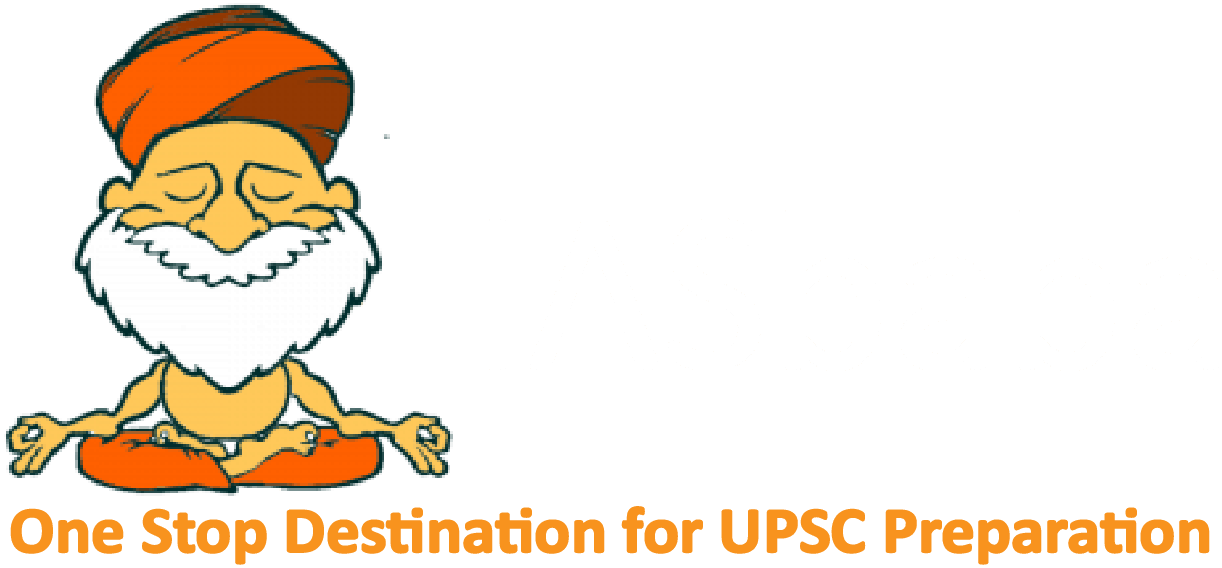For Previous Daily Quiz (ARCHIVES) – CLICK HERE
The Current Affairs questions are based on sources like ‘The Hindu’, ‘Indian Express’ and ‘PIB’, which are very important sources for UPSC Prelims Exam. The questions are focused on both the concepts and facts. The topics covered here are generally different from what is being covered under ‘Daily Current Affairs/Daily News Analysis (DNA) and Daily Static Quiz’ to avoid duplication. The questions would be published from Monday to Saturday before 2 PM. One should not spend more than 10 minutes on this initiative.
Gear up and Make the Best Use of this initiative.
Do remember that, “the difference between Ordinary and EXTRA-Ordinary is PRACTICE!!”
0 of 5 questions completed
Questions:
To view Solutions, follow these instructions:
You have already completed the test before. Hence you can not start it again.
Test is loading...
You must sign in or sign up to start the test.
You have to finish following test, to start this test:
0 of 5 questions answered correctly
Your time:
Time has elapsed
You have scored 0 points out of 0 points, (0)
| Average score |
|
| Your score |
|
| Pos. | Name | Entered on | Points | Result |
|---|---|---|---|---|
| Table is loading | ||||
| No data available | ||||
With reference to the IUCN Red List, consider the following statements:
Which of the above statements is/are correct?
Solution (d)
The IUCN Red List is a critical indicator of the health of the world’s biodiversity. It contains the list of threatened plant and animal species.
Threatened species in IUCN Red List is a grouping of three categories: Critically Endangered, Endangered, and Vulnerable.
The Red data book contains three coloured pages, Red, Pink and Green. Red is symbolic of the danger that some species of both plants and animals presently experience throughout the globe. The Pink pages in the Red data book include the critically endangered species. Green pages are used for those species that were formerly endangered, but have now recovered to a point where they are no longer threatened.
Article Link: Over 900 species of animals have become extinct according to latest IUCN Red List
Solution (d)
The IUCN Red List is a critical indicator of the health of the world’s biodiversity. It contains the list of threatened plant and animal species.
Threatened species in IUCN Red List is a grouping of three categories: Critically Endangered, Endangered, and Vulnerable.
The Red data book contains three coloured pages, Red, Pink and Green. Red is symbolic of the danger that some species of both plants and animals presently experience throughout the globe. The Pink pages in the Red data book include the critically endangered species. Green pages are used for those species that were formerly endangered, but have now recovered to a point where they are no longer threatened.
Article Link: Over 900 species of animals have become extinct according to latest IUCN Red List
With reference to Atal Pension Yojana, consider the following statements:
Which of the above statements is/are correct?
Solution (c)
The Atal Pension Yojana (APY) was launched to create a universal social security system for all Indians, especially the poor, the under-privileged and the workers in the unorganised sector. APY is administered by Pension Fund Regulatory and Development Authority (PFRDA).
APY is open to all bank account holders in the age group of 18 to 40 years and the contributions differ, based on pension amount chosen.
Subscribers receive the guaranteed minimum monthly pension of Rs. 1000 or Rs. 2000 or Rs. 3000 or Rs. 4000 or Rs. 5000 at the age of 60 years.
The amount of pension is guaranteed for lifetime to the spouse on death of the subscriber.
In the event of death of both the subscriber and the spouse, the entire pension corpus is paid to the nominee.
Contributions to the Atal Pension Yojana (APY) are eligible for tax benefits similar to the National Pension System (NPS).
Article Link: Atal Pension Yojna dominates social security scheme with 66% NPS subscriber base
Solution (c)
The Atal Pension Yojana (APY) was launched to create a universal social security system for all Indians, especially the poor, the under-privileged and the workers in the unorganised sector. APY is administered by Pension Fund Regulatory and Development Authority (PFRDA).
APY is open to all bank account holders in the age group of 18 to 40 years and the contributions differ, based on pension amount chosen.
Subscribers receive the guaranteed minimum monthly pension of Rs. 1000 or Rs. 2000 or Rs. 3000 or Rs. 4000 or Rs. 5000 at the age of 60 years.
The amount of pension is guaranteed for lifetime to the spouse on death of the subscriber.
In the event of death of both the subscriber and the spouse, the entire pension corpus is paid to the nominee.
Contributions to the Atal Pension Yojana (APY) are eligible for tax benefits similar to the National Pension System (NPS).
Article Link: Atal Pension Yojna dominates social security scheme with 66% NPS subscriber base
With reference to the Account Aggregator framework, seen recently in news, consider the following statements:
Which of the above statements is/are correct?
Solution (c)
According to the Reserve Bank of India, an Account Aggregator is a non-banking financial company engaged in the business of providing, under a contract, the service of retrieving or collecting financial information pertaining to its customer.
It is also engaged in consolidating, organising and presenting such information to the customer or any other financial information user as may be specified by the bank.
The AA framework was created through an inter-regulatory decision by RBI and other regulators including Securities and Exchange Board of India, Insurance Regulatory and Development Authority, and Pension Fund Regulatory and Development Authority (PFRDA) through and initiative of the Financial Stability and Development Council (FSDC).
The licence for AAs is issued by the RBI, and the financial sector will have many AAs.
The AA reduces the need for individuals to wait in long bank queues, use Internet banking portals, share their passwords, or seek out physical notarisation to access and share their financial documents. An Account Aggregator is a financial utility for secure flow of data controlled by the individual.
Article Link: Account Aggregators: new framework to access, share financial data
Solution (c)
According to the Reserve Bank of India, an Account Aggregator is a non-banking financial company engaged in the business of providing, under a contract, the service of retrieving or collecting financial information pertaining to its customer.
It is also engaged in consolidating, organising and presenting such information to the customer or any other financial information user as may be specified by the bank.
The AA framework was created through an inter-regulatory decision by RBI and other regulators including Securities and Exchange Board of India, Insurance Regulatory and Development Authority, and Pension Fund Regulatory and Development Authority (PFRDA) through and initiative of the Financial Stability and Development Council (FSDC).
The licence for AAs is issued by the RBI, and the financial sector will have many AAs.
The AA reduces the need for individuals to wait in long bank queues, use Internet banking portals, share their passwords, or seek out physical notarisation to access and share their financial documents. An Account Aggregator is a financial utility for secure flow of data controlled by the individual.
Article Link: Account Aggregators: new framework to access, share financial data
Pradhan Mantri JI-VAN Yojana is aimed towards:
Solution (b)
Pradhan Mantri JI-VAN (Jaiv Indhan- Vatavaran Anukool fasal awashesh Nivaran) Yojana aims to provide financial support to Integrated Bioethanol Projects using lignocellulosic biomass and other renewable feedstock.
Centre for High Technology (CHT), a technical body under the aegis of Ministry of Petroleum and Natural Gas (MoP&NG), is the implementation Agency for the scheme.
The objectives of the scheme are:
Article Link: Emerging opportunities in Biofuel Sector
Solution (b)
Pradhan Mantri JI-VAN (Jaiv Indhan- Vatavaran Anukool fasal awashesh Nivaran) Yojana aims to provide financial support to Integrated Bioethanol Projects using lignocellulosic biomass and other renewable feedstock.
Centre for High Technology (CHT), a technical body under the aegis of Ministry of Petroleum and Natural Gas (MoP&NG), is the implementation Agency for the scheme.
The objectives of the scheme are:
Article Link: Emerging opportunities in Biofuel Sector
Which of the following country forms a coastline with the Adriatic Sea?
Solution (c)
The countries with coasts on the Adriatic are Albania, Bosnia and Herzegovina, Croatia, Italy, Montenegro and Slovenia. The Adriatic contains more than 1,300 islands, mostly located along the Croatian part of its eastern coast.
Recently, Foregin Ministers of India and Croatia held a meeting. Both countries asserted that they share a lot of common positions on issues like the Indo-Pacific, the situation in Afghanistan, combating terrorism and shared economic interests.
Article Link: India, Croatia share common positions on issues like Indo-Pacific, Afghanistan and terrorism: Jaishankar
Solution (c)
The countries with coasts on the Adriatic are Albania, Bosnia and Herzegovina, Croatia, Italy, Montenegro and Slovenia. The Adriatic contains more than 1,300 islands, mostly located along the Croatian part of its eastern coast.
Recently, Foregin Ministers of India and Croatia held a meeting. Both countries asserted that they share a lot of common positions on issues like the Indo-Pacific, the situation in Afghanistan, combating terrorism and shared economic interests.
Article Link: India, Croatia share common positions on issues like Indo-Pacific, Afghanistan and terrorism: Jaishankar


